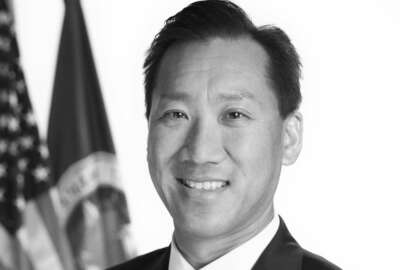

For the Trump administration, 2018 was a productive year filled small, but productive steps toward its goal of modernizing the federal workforce. But it was a v...
As 2018 comes to a close and the new year begins, the federal workforce is at pivotal point after a long and busy year.
For the Trump administration, you can’t sum up the year without the letters “P-M-A.”
The administration unveiled the President’s Management Agenda back in March. And while top leaders acknowledged the key pillars of data transparency, IT modernization and a 21st century workforce weren’t necessarily new or groundbreaking, the intersection of all three ideas would push the administration in new directions that previous ones haven’t yet gone.
This past year had good government groups thinking about about the 40th anniversary of the Civil Service Reform Act of 1978. The nature of work in the 21st century is rapidly evolving, they said, and the existing civil service system isn’t equipped to adapt and meet those changes.
But the stars didn’t quite align, and 2018 wasn’t the year that the Trump administration unveiled the CSRA 2.0, or even something remotely similar to a big, sweeping effort to modernize the decades-old Senior Executive Service or even older General Schedule.
Instead, the administration spent the back-half of 2018 focusing on the smaller things. It prompted the Office of Personnel Management to practically remove itself from the process of securing direct hire authority for certain IT positions. It gave agencies more direct-hire authority in general and set up a process for developing a new special occupational pay and classification system. It made it easier for agencies to ensure their senior executives are performing at a high level.
Based on the message Margaret Weichert, acting OPM director and deputy director for management at the Office of Management and Budget, gave to chief human capital officers at the end of the year, expect more of these kinds of actions from OPM and the Trump administration in 2019.
They may not make the major headlines in the national media, but the administration is clearly looking for ways it can resolve some long-held management frustrations — without trying to clear a new bill in the Senate or negotiate with House Democrats.
Also watch for chief human capital leaders, administration officials and agencies to double down on their efforts to shorten the federal hiring process, improve employee engagement and performance management and reskill employees for new kinds of work.
If 2018 was about setting the stage for a modern, well-equipped and passionate federal workforce, 2019 could be the year the Trump administration doubles down and makes good on those goals set forth in the PMA.
But for federal employee unions, 2018 was a very different kind of year.
President Donald Trump’s State of the Union address lit a fire under the bellies of some federal employee groups, when he called on Congress to grant cabinet secretaries the “authority to reward good workers — and to remove federal employees who undermine the public trust or fail the American people.”
By May, the American Federation of Government Employees had deemed the PMA a “set of worst practices,” designed with “dark” political intentions in mind at a hearing before the House Oversight and Government Reform Committee.
Even Jeff Pon, OPM’s director at the time, had recognized the administration’s relationship with federal unions was “not so good right now” and that “there’s not too much right now that we agree on.”
A few weeks later, before the long Memorial Day holiday weekend, the President signed three executive orders designed to place more limits on collective bargaining and official time.
A group of more than a dozen unions sued the Trump administration over the EOs, and a federal district judge overturned nine of the provisions. Now the administration is appealing.
These legal battles have been time-consuming for the administration, and they’ll likely continue well into 2019.
If the civil service reformers from the 1978 era looked at the past year, they’d see little reason to believe that something remotely similar to the Civil Service Reform Act could pass in today’s environment.
The Civil Service Reform Act passed Congress with bipartisan support, and the Carter administration worked with federal employee unions to negotiate new legislation that their members could buy into.

But even beyond the May executive orders, unions aren’t happy with how the administration communicated and solicited feedback from their members about the reorganization plan. They fear the administration wants to dismantle OPM — and their retirement, telework and other employee benefits while they’re at it.
The addition of a partial government shutdown and 2019 pay freeze doesn’t help matters.
And House Democrats are ready to carry the unions’ fight on their shoulders starting in a few days.
Good government groups and employees themselves have been talking about the same frustrations with hiring, firing and rewarding the right people for years, if not decades.
Remember the Clinton administration’s Reinventing Government? Or the short-lived National Security Personnel System from the George W. Bush administration? How about those half-dozen hiring reform initiatives from the Obama administration?
Weichert has said she believes the administration can appeal to employees’ sense of mission to earn their trust and commitment toward the ideas and goals put forth in the PMA.
But if the Trump administration wants its ideas for civil service modernization to outlive the next few years, it’ll need to win the hearts and minds of the employees themselves. The administration and agency leaders themselves will need to show — not just tell — federal employees that their ideas matter and they’re in this together.
Copyright © 2024 Federal News Network. All rights reserved. This website is not intended for users located within the European Economic Area.
Nicole Ogrysko is a reporter for Federal News Network focusing on the federal workforce and federal pay and benefits.
Follow @nogryskoWFED
